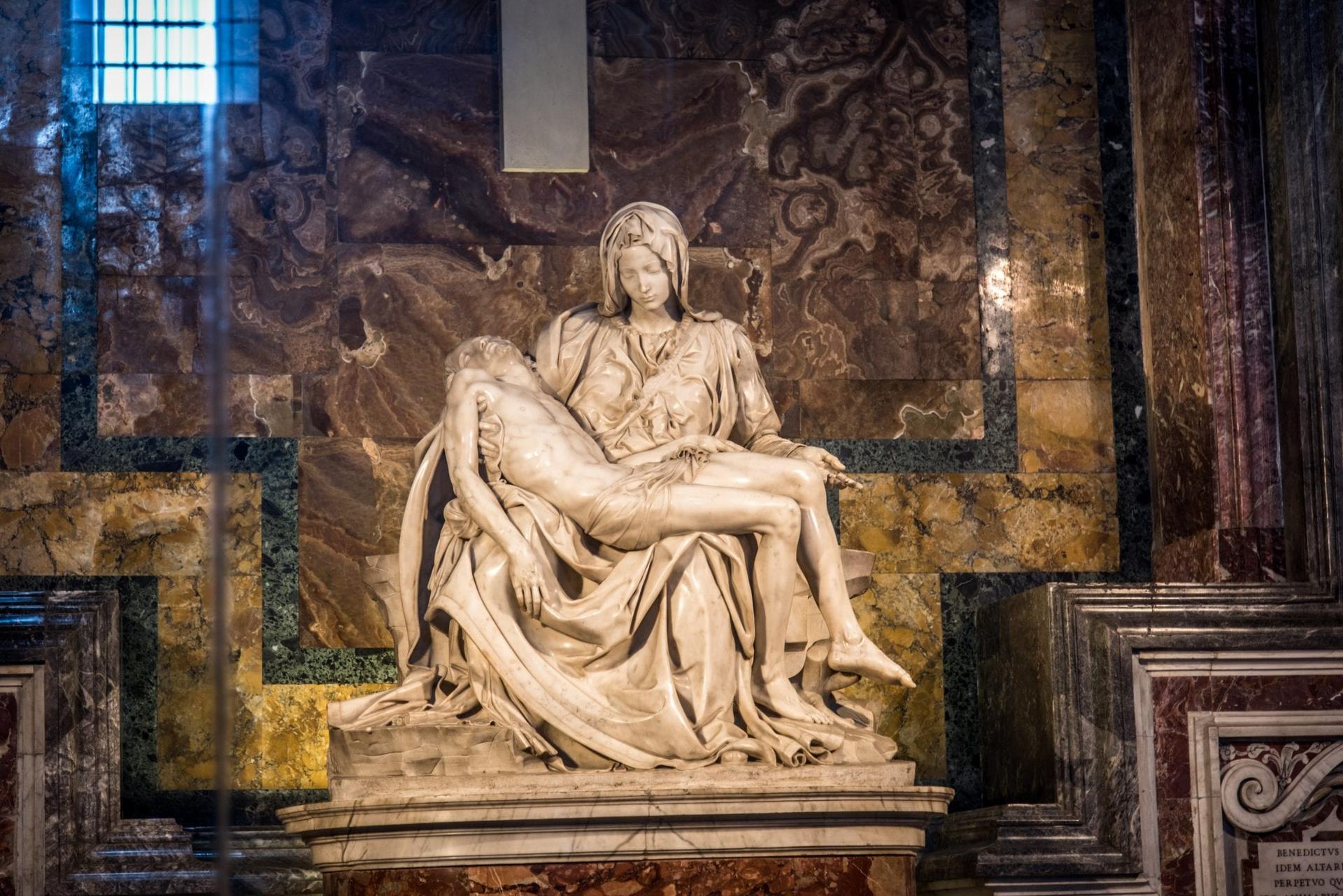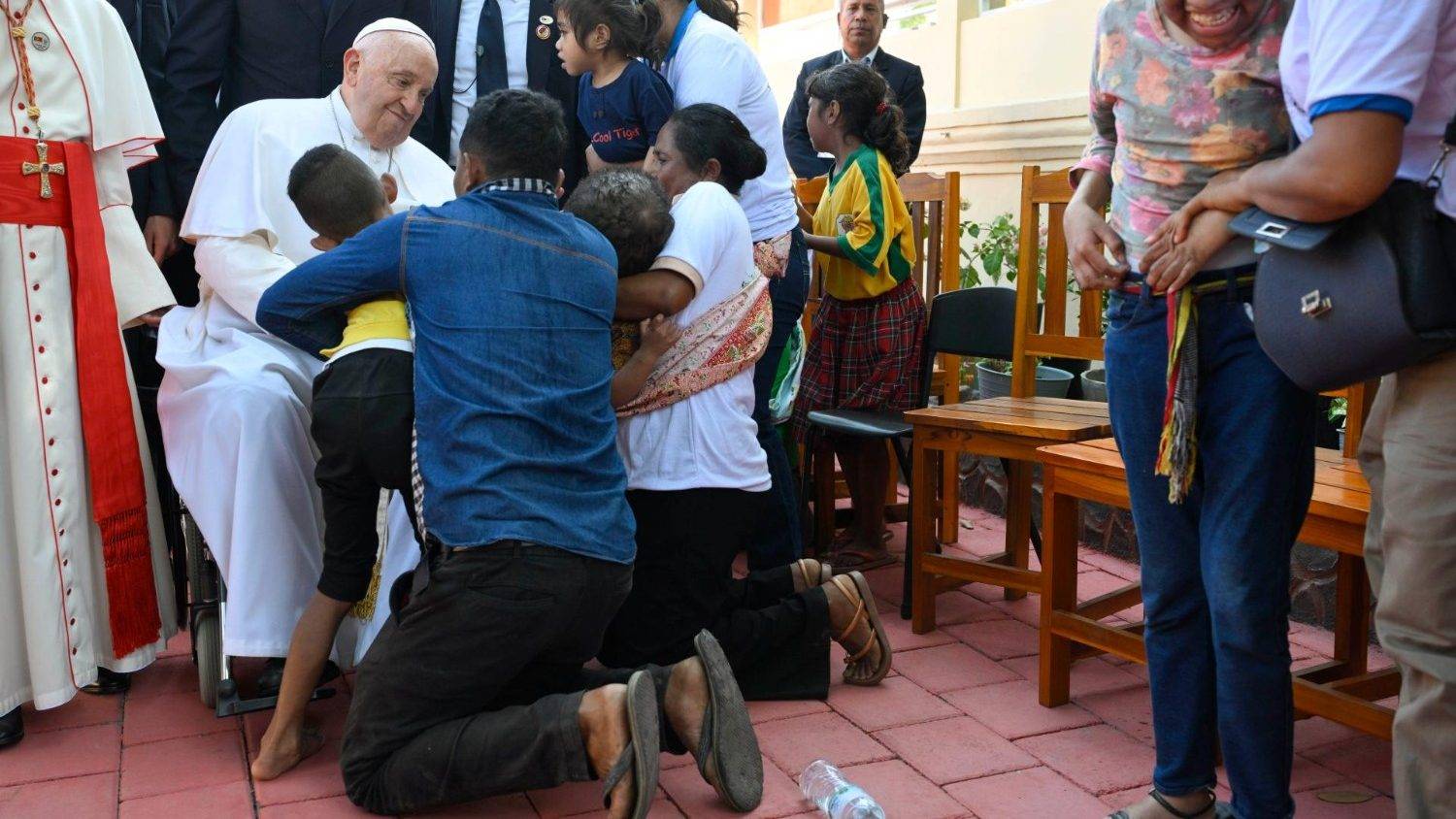NEW YORK – As curators at New York’s Metropolitan Museum of Art carefully unwrap elaborate religious garments on loan from the Vatican’s Sistine Chapel to exhibit them in their galleries, it’s a good moment to look back at other times when Catholic art served as an ambassador for dialogue with the United States.
This is at least the third major display of the Vatican’s artistic heritage in America, following previous exhibits in the mid-1960s and in 1979. Such outings on foreign soil are actually an historical novelty, since in the past, the curious or art-obsessed would have to physically visit the Church’s sites to see its masterpieces.
That approach, in the first place, was out of respect for the value of context. Paintings by Caravaggio or sculptures by Bernini could be viewed by faithful and non-faithful alike in the place that artists and patrons originally intended. In that way, viewers could immediately link the art with the Catholic message it was meant to communicate.
Also, the Catholic Church, which notoriously thinks in centuries, has been no stranger to the possibilities of plunder and art theft over the ages, with invaders lusting after Church treasures from the time of the Visigoths to that of Napoleon. Even Catholic religious orders throughout the world would sometimes “forget” to send back artwork on loan from the Vatican.
Insisting that they remain in their original settings was therefore, also a way of defending the physical safety of the pieces.
Among the most treasured art of all in the Vatican’s collection is the Pietà by Michelangelo, a masterful representation of Mary holding Jesus’ body taken from the cross, a statue smoothed to pearly perfection by its creator.
It was Blessed Pope Paul VI who, in 1964, allowed for the Pietà to be carefully transported to New York’s World Fair to be placed in the Vatican’s pavilion. It was the first time the piece had been moved from St. Peter’s Basilica in Rome in a little under 500 years, and upon arrival it was placed before a blue panel, with light pouring straight over it, in Flushing Meadows-Corona Park.
It was among the most viewed exhibits at the fair, with over 30 million visitors in one year, a testament to Catholicism’s ability to gather crowds through art and mystique. But the Pietà stood not just as an example of beauty and faith. It came with a message.
“No more war, war never again,” Pius VI said in a famous speech at United Nations headquarters in New York on October 14, 1965, on a trip which made him the first pontiff in history to visit the United States.
After speaking to the 2,000 or so dignitaries and officials at the UN, Pius VI went for a 25-mile ride down to Queens to visit the Pietà, the masterpiece that had paved the way for his arrival.
Despite the positive publicity of the event, Paul VI would later impose a ban on the loan of all monuments and artwork from the Vatican, which were not to be sent abroad for either “cultural and esthetic motives” or “other purely worldly motives.”
The reasoning was said to be concern for the artwork, which at the time incurred serious risks through transportation. But since the ban didn’t include parts of Italy, some believe that Italian art historians and museum directors really wanted to preserve their exclusive access.
But the power of Catholic imagery to attract visitors – and hence money – was too much to let go.
Through careful negotiations, the Metropolitan Museum of Art managed to persuade Pope John Paul II to lend more of the Vatican’s precious artwork for a three-stop tour of the U.S., including Chicago and San Francisco.
It was the Polish pope’s 1979 visit to the U.S. that started the ball rolling on the loan. The pope’s first of seven visits to the country garnered enormous attention, and he became the first pontiff to visit the White House.
When the exhibit came together, over 200 pieces of precious Vatican artwork were displayed on American shores. Philippe De Montebello, the director of the Met at the time, told the New York Times that upon hearing of the arrival of the Polish pontiff, he was inspired to contact the Vatican to propose a tour of Catholic art through the country.
It ended up being the most expensive exhibition ever made at the time, costing a total of $8 million. The Met’s show, called “The Vatican Collections: The Papacy and Art,” was among the most popular in the history of the museum with almost 900,000 visitors.
Since the late 1970s, the Vatican has generously loaned artwork to the far reaches of the earth, thanks in part to new and safer modes of transportation.
Pope emeritus Benedict XVI would often send artwork to the places he would visit. Priceless tapestries from the Sistine Chapel, for instance, were sent to the Victoria and Albert Museum ahead of the pope’s visit to London in 2010. A year later, the pope sent Raphael’s Madonna of Foligno to visit its sister canvas, the Sistine Madonna, in Dredsden on the occasion of his visit to Germany.
Today, carefully conserved garments and religious vestments are being sent to the Met’s Costume Institute for the first time, providing an extra attraction for what’s already the most-Instagrammed event of the year. The exhibit, which will run from May to October and is titled “Heavenly Bodies: Fashion and the Catholic Imagination,” is likely to gather large crowds.
Stephen A. Schwarzman, a founder of Blackstone, the world’s largest alternative investment company, along with his wife, Christine, are honorary chairs for the event, which also means big money is involved.
Certainly, it’s difficult to imagine something more “worldly” than fashion’s night out at the Met Gala inaugurating the exhibit on May 7. Still, history suggests that opposites sometimes attract – and on one of New York’s biggest stages this week, the sacred and the secular seem set to write another chapter in their long-running, and ever-complicated, relationship.
By the way, Crux’s coverage of the Met Gala and the relationship between faith and fashion can be found here.
Stay tuned for Crux’s latest news and updates related to the 2018 Met Gala and exhibition on Catholic fashion, where Crux’s faith and culture correspondent, Claire Giangravè, and national correspondent Christopher White will be providing regular updates. Follow them on Twitter: @ClaireGiangrave & @CWWhite212 and visit Crux for daily updates and interviews from New York City.















